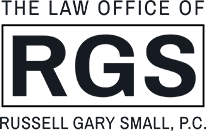If your debts have strained and broken every financial resource you have, bankruptcy might be your final solution. Most people dread the prospect of bankruptcy, but it can provide you with immediate relief. For example, your creditors must stop contacting you when you file.
Like most people, you may not know which form of personal bankruptcy — Chapter 13 or 7 — will let you reach your debt removal goals. Learning about the differences between these two bankruptcies can help you determine how to proceed.
Breaking down Chapter 7 bankruptcy
In a Chapter 7 bankruptcy, the court orders the liquidation of your assets. The money raised during this process goes to your creditors, and you will no longer be responsible for paying your former debts. Most Chapter 7 filings conclude within about six months.
The main disadvantages of Chapter 7 include:
- Loss of personal assets
- Lowering of your credit score
- Loss of your home (although not always)
To qualify, you must pass the means test, which is the court’s way of determining whether you can pay off your debts outside of bankruptcy.
A look at Chapter 13
In a Chapter 13 bankruptcy, you reorganize your debts to arrive at a repayment plan you can afford. Those who fail the Chapter 7 means test typically file Chapter 13 instead.
Two drawbacks of Chapter 13 are its effect on your credit score and the time it takes to complete — usually three to five years. Both bankruptcy options may pose obstacles when seeking a mortgage, loans and credit cards for several years.
Learning more about Connecticut bankruptcy laws can help you make informed decisions when addressing overwhelming debt.

